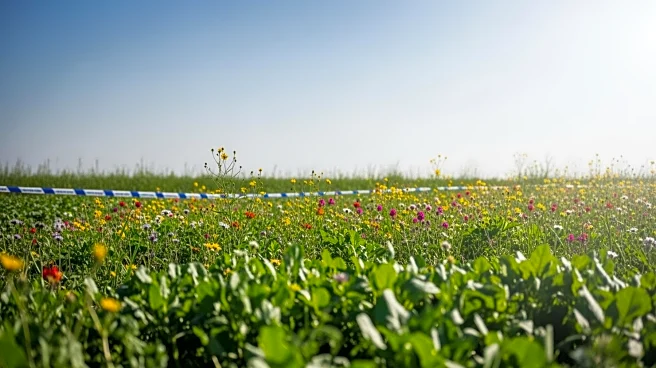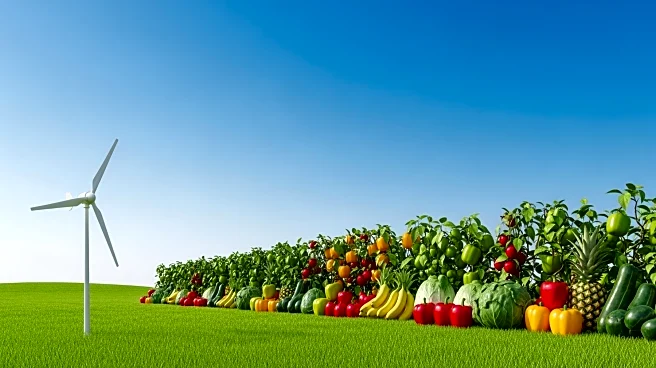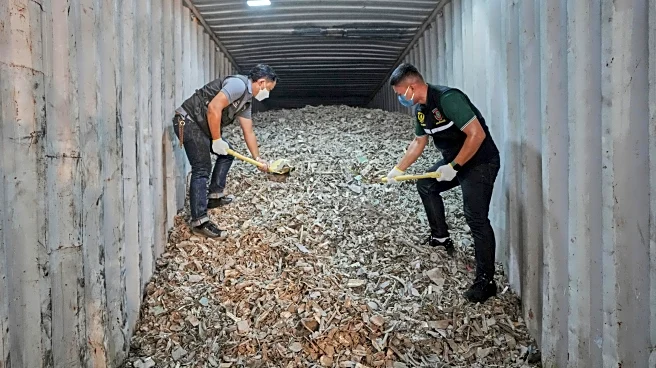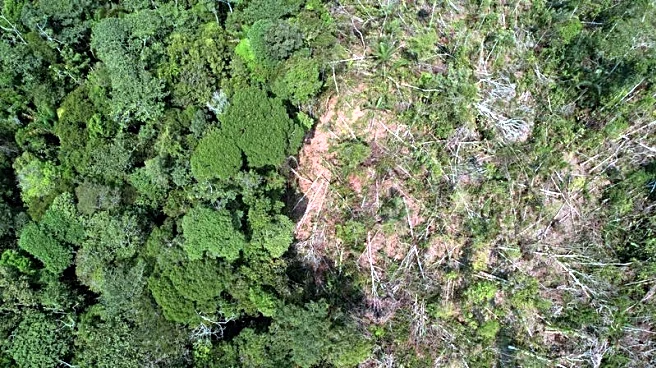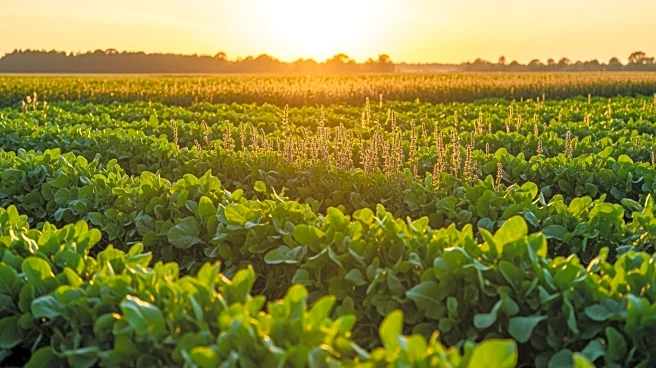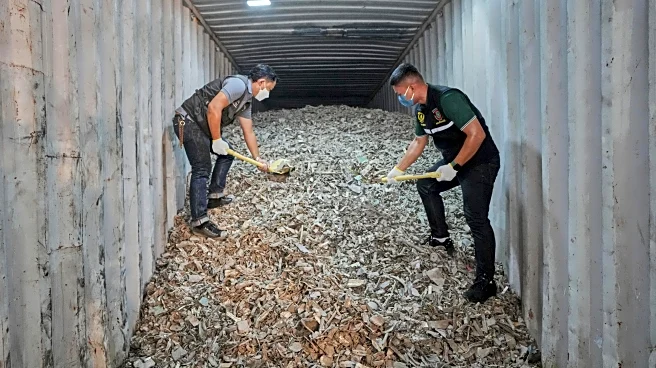What's Happening?
Regenerative agriculture, often referred to as 'regenag', is gaining traction as a sustainable farming approach that focuses on soil and ecosystem restoration. This method emphasizes working with nature
to rehabilitate farmlands, aiming to achieve sustainable and circular agriculture. Key practices include reducing chemical inputs, enhancing soil health, and supporting biodiversity. Initiatives like Kaleka's Gawi Bapakat in Indonesia are demonstrating early success by guiding farmers away from chemical-heavy inputs towards biological and organic materials. The approach is seen as a way to reduce greenhouse gas emissions and improve food security, with increasing interest from investors and stakeholders.
Why It's Important?
Regenerative agriculture represents a significant shift in farming practices, offering potential solutions to pressing environmental challenges such as soil degradation and climate change. By improving soil health and reducing reliance on chemical inputs, this approach can enhance land productivity and resilience, contributing to climate goals. It also supports farmers' livelihoods by providing sustainable methods that can lead to more consistent harvests. As the global demand for food increases, regenerative agriculture offers a pathway to meet these needs while minimizing environmental impact, making it a crucial component of future food systems.
What's Next?
Scaling regenerative agriculture requires overcoming challenges such as limited availability of organic materials and changing farmers' mindsets. Collaboration among government agencies, private sectors, and non-profits is essential to provide the necessary support and incentives for farmers. Carbon farming projects offer financial incentives for adopting regenerative practices, rewarding efforts to boost soil carbon sequestration. As the movement gains traction, further investments and engagement from stakeholders will be necessary to expand these practices and achieve large-scale impact.
Beyond the Headlines
Regenerative agriculture not only addresses environmental concerns but also challenges conventional farming mindsets. It requires farmers to adopt long-term thinking, viewing soil as a living system rather than just an input. This shift in perspective is crucial for the widespread adoption of regenerative practices. Additionally, the approach is not one-size-fits-all, necessitating adaptive management based on local conditions. As the movement grows, it will require more trained agronomists and plant scientists to support farmers in this transition.
